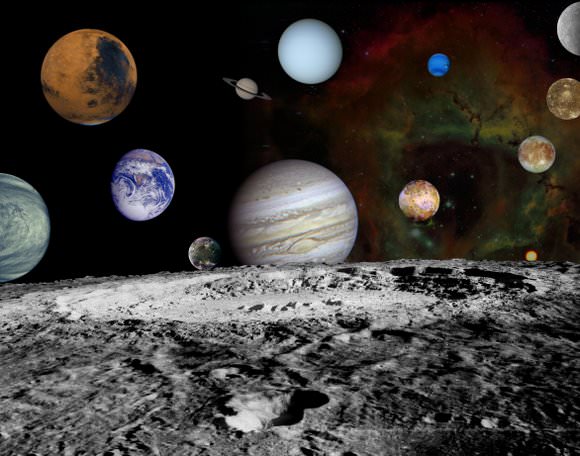the STS-128 mission, NASA TV played a message from comedian Stephen
Colbert, namesake of the Combined Operational Load Bearing External Resistance Treadmill (COLBERT). The treadmill is on board space shuttle Discovery, which will launch at
5:36 GMT (1:36 EDT) Tuesday morning, heading to the International Space
Station for a 16 day mission. As of this writing, Discovery’s external
tank has been loaded with about 500,000 gallons of liquid hydrogen and
liquid oxygen in preparation for the launch. This will be Discovery's
37th mission to space and the 30th mission of a space shuttle dedicated
to the assembly and maintenance of the International Space Station.
UPDATE: The launch was scrubbed because of stormy weather.
NASA will try again at 5:10 GMT (1:10 a.m. EDT) Wednesday. The most
recent forecast calls for a 70 percent chance of acceptable conditions
at that time.
The launch will be shown live on NASA TV. Here's where to watch it one the web.
How Close Did Hurricane Bill Come to the US East Coast?

Hurricane Bill kept its distance from the US mainland, seemingly
skirting along the eastern seaboard and fitting perfectly within the
coastline curves on this NASA satellite image. Thankfully, the storm
largely missed the eastern states, with the center of the storm well
off the coast. It appears Bill will keep its distance from the Canadian
coast as well. It has now been downgraded to a tropical storm, and is
expected to weaken over the next 24 hours. As of late Sunday night, the
storm had maximum sustained winds near 120 kilometers (75 miles) per
hour with higher gusts. This image was taken by the Moderate Resolution
Imaging Spectroradiometer (MODIS) on NASA’s Aqua satellite, taken at
2:00 p.m. EDT (14:00 UTC) on August 23, 2009.
Source: NASA Earth Observation website
The Navigators: How We Fly Spacecraft Around the Solar System

Solar system montage. Credit: NASA
Navigating a spacecraft through the heavens has been compared to
sailing a ship on the open seas or driving a vehicle on a long, cross
country journey. Analogies are necessary, since spacecraft navigation
is performed by a relatively small sampling of the human race, and the
job usually involves doing things that have never been done before.
Those of us who have trouble making sense of a road map here on Earth stand in awe of what these celestial navigators can accomplish.
Literally, this is rocket science.
Click to continue…
~~~~~~~~~~~~~~~~~~~~~~~~~~~~~
www.spaceweather.com
ETERNAL DARKNESS: For years, planetary scientists have speculated about places on
the Moon where the sun never shines. NASA may have just found one
of them. Behold the inky depths of Crater Erlanger:

NASA's Lunar Reconnaissance Orbiter (LRO) flew over the 10-km crater
last week and took a look inside. It was pure shadow. Crater Erlanger
is near the Moon's north pole. Because the Moon's spin axis is tilted
only 1.5 degrees, sunlight cannot surmount the crater's steep rim
to flood the interior.
What lies inside the darkness? An exciting possibility is frozen
water. Temperatures in the dark bottom could be as low as -370 Fahrenheit,
cold enough to keep ice from sublimating even in hard lunar vacuum.
Ice in dark craters could be an invaluable resource for future human
explorers. Just melt and drink. Or split H2O into hydrogen
for rocket fuel and oxygen for breathing. Water also makes an excellent
radiation shield. Two spacecraft, the LRO and India's Chandrayaan-1
probe, are pinging the crater using onboard radars to learn more
about Erlanger's hidden deposits. Get the full
story from Arizona State University.
~~~~~~~~~~~~~~~~~~~~~~~~~~~~~~~~~~~~~~~~~~~~~
LIGHTNING "Upside Down" Lightning as Strong as Earth-bound Bolts National Geographic - August 24, 2009
"Upside Down" Lightning as Strong as Earth-bound Bolts National Geographic - August 24, 2009 
Lightning's mirror image... only much bigger PhysOrg - August 23, 2009
Gigantic Lightning Jets Shoot from Clouds to Space Live Science - August 23, 2009



